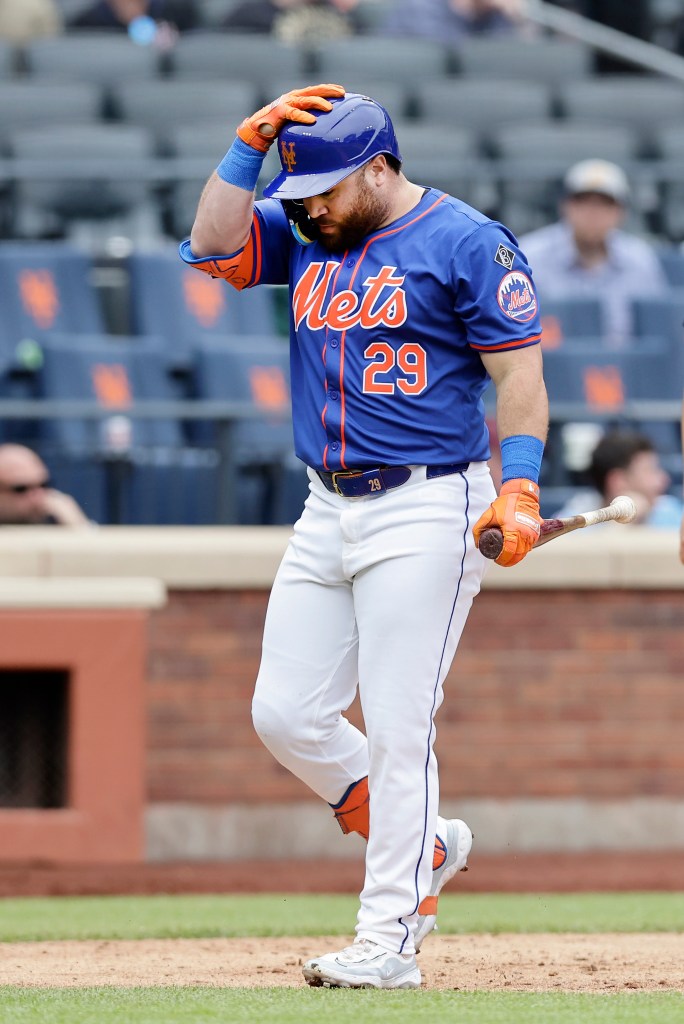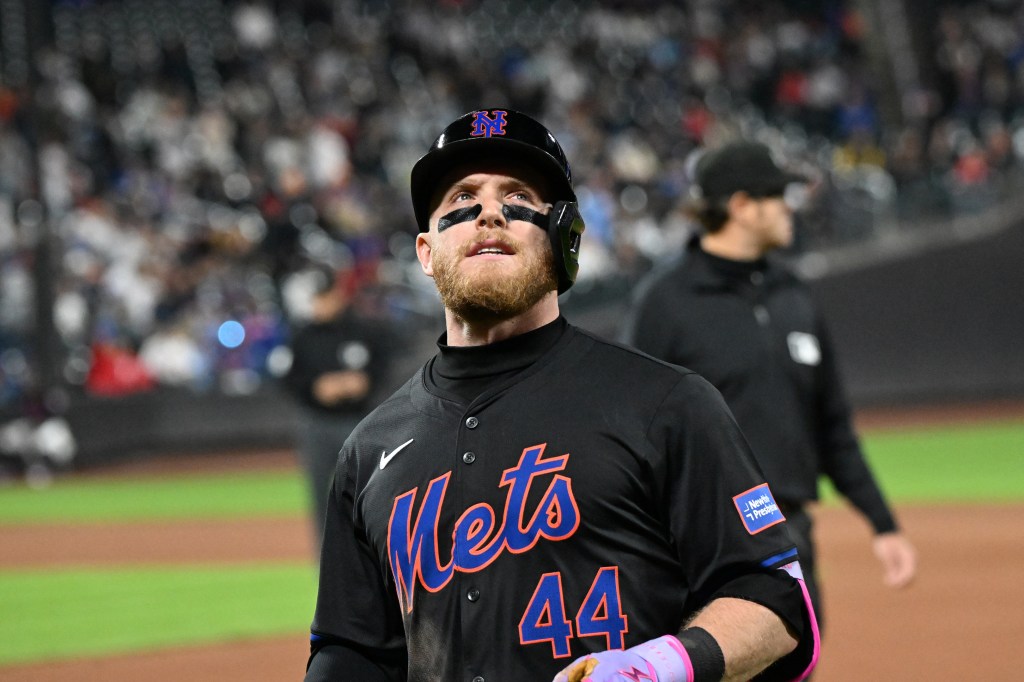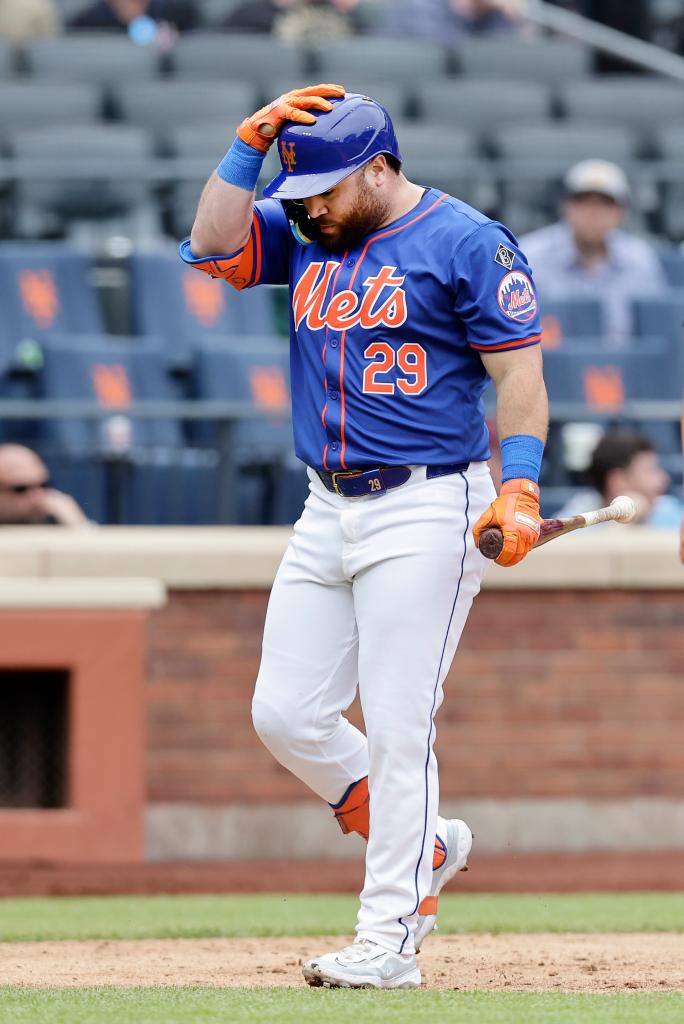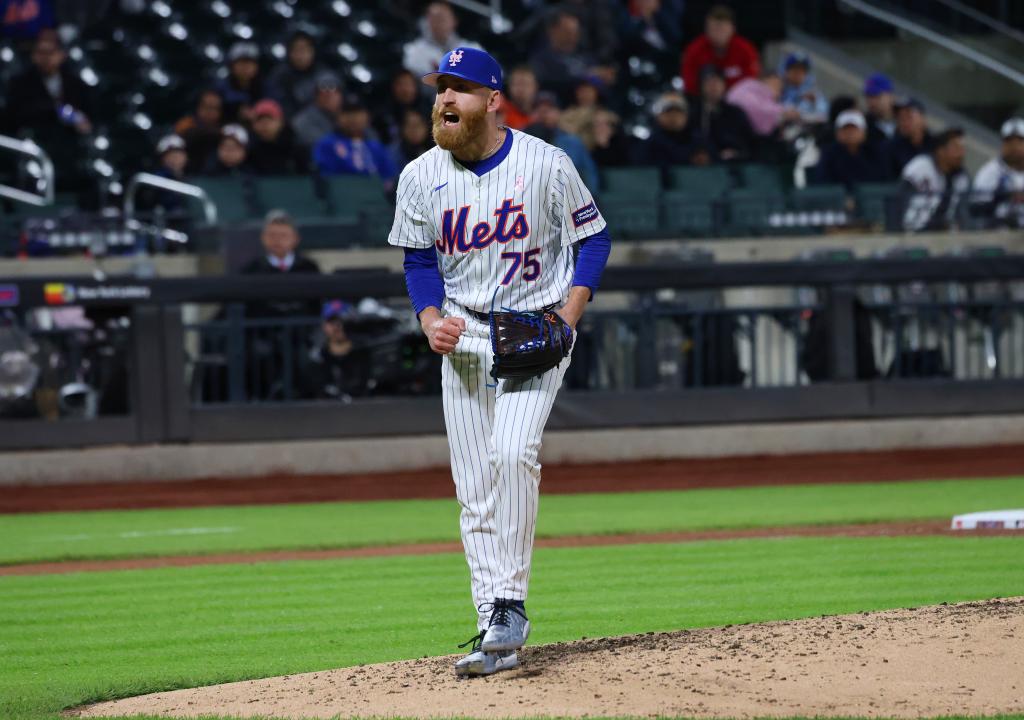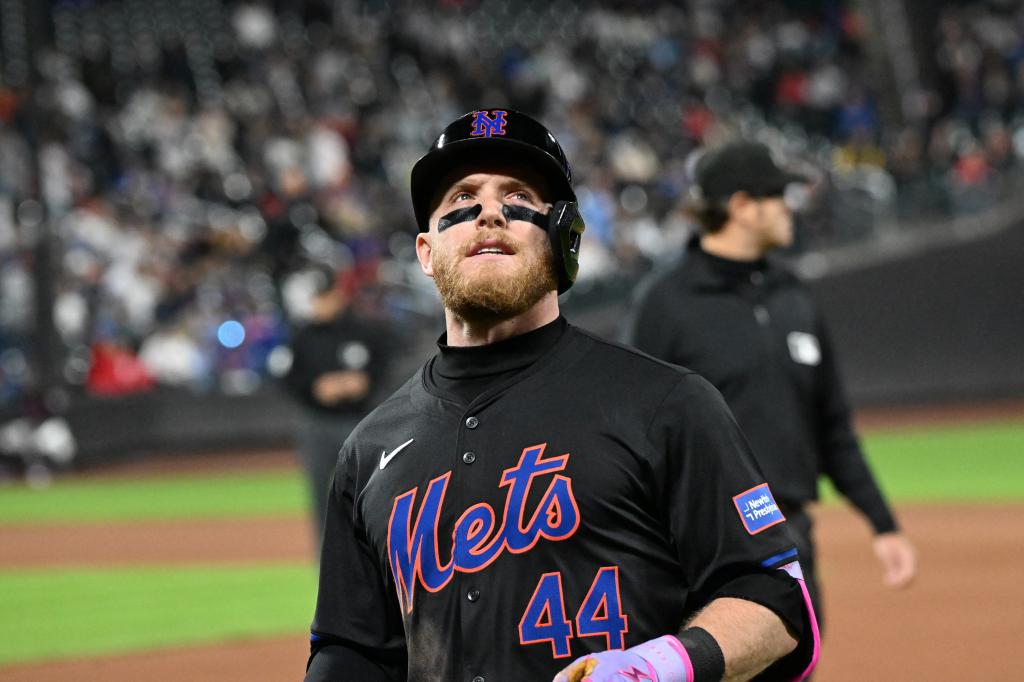Tyrone Taylor played his first five major league seasons with the Brewers and didn’t love trips to Busch Stadium to face the NL Central rivals.
The Cardinals’ home park has long been favorable to pitchers, with plenty of foul territory behind home plate that lends itself to foul outs.
This year, though, he enjoyed the hitting environment of an early May series in St. Louis.
“Watching the ball fly out there compared to here [in Queens],” Taylor said recently, “I was like, ‘Holy crap.’”
plate this season. Getty Images
The Mets begin a 10-game homestand Friday that probably is more welcome to the club’s pitchers than position players.
Citi Field has never been a desirable venue for hitters, but 2024 has begun with such offensive ineptitude — from both the Mets and visitors alike — that all-time records are at least on the radar.
Through 24 games, the Mets have posted a .609 OPS in Flushing that entered play Thursday as the worst in the majors and not by a little: No. 29 was the White Sox at .634.
Through the small sample size of a few months in cold, windy weather, that .609 home OPS would be the second-worst for any team since 1977, beating only the 2022 A’s (.605 OPS).
The offensive struggles are felt in both dugouts.
Despite the horrid offensive numbers, the Mets have won 10 of 24 home games because their pitching has similarly dominated at home and limited opponents to just a .596 OPS.
The hitting horrors and pitching excellence adds up to Mets fans who show up for games seeing the worst display of offense in baseball this season.
Hitters at Citi Field are slashing .202/.290/.313. In what has been a down season for offense across Major League Baseball, no park has taken more of a hit than the Mets’.
By Statcast’s Park Factors analytic tool, Citi Field — usually one of the worst but not usually the overall worst — has been the single worst park to hit in this year.
“It always plays big,” Mets hitting coach Jeremy Barnes said. “So far, it’s played even worse. Weather, cold, April — we don’t know [why]. I don’t know. We’ve seen a lot of balls, especially around the 105 [mph] mark, just kind of float and not go.”
The early-season weather is at least a component.
Last year, the Mets didn’t play their 24th game at Citi Field until June 1, the result of several rainouts and a road-heavy schedule in the first few months of play.
Through 24 Mets home games last season, all hitters at Citi Field were hitting .231 with a .702 OPS.
This year’s Mets played their 24th home game on May 14. Perhaps more home games earlier in the season — in colder-weather months — is partially to blame.
Also surely factoring in is an overall deadening of offense around the game.
The average hitter in 2024 entered play Thursday with a .699 OPS, which would be the lowest in a season since 1989 (.695). The average hitter posted a .734 OPS last year.
The Mets, though, have seen a greater exaggeration in their splits than anyone.
Last year, Buck Showalter’s group hit 14 points better at home (.731 OPS) than on the road (.717 OPS). This year, Carlos Mendoza’s offense has been 142 points worse when at home, from a .751 OPS on the road to the .609 mark in Queens.
“Our home-and-away stats speak for themselves,” Brandon Nimmo said after the Mets were swept in Cleveland on Wednesday. “When we get on the road, we do a lot better. I think that will change — not necessarily change, but the home stats will get better as the weather gets better in the Northeast.”
“All we can do is worry about the process,” Barnes added. “Swing at the right pitches, put good swings on it.
“And if we hit a 105 [mph exit velocity] and 28 [-degree launch angle] and it doesn’t go over the fence, it is what it is.”
Another possible factor: perhaps greater winds at Citi Field thus far. Entering play Thursday, when major league hitters had smacked a pitch at least 104 mph with a launch angle of between 28 and 35 — solid ingredients for dingers — at every other ballpark, they were hitting .833 with home runs about 83 percent of the time (314 in 377 at-bats).
Hitters in Queens saw a dip on such barreled-up balls, hitting .769 with 10 homers in 13 at-bats (about 77 percent).
Included in that subset: a Nimmo drive against the Cardinals that died at the warning track in right-center and became an out; a 404-foot shot from Pete Alonso on May 11 that Atlanta’s Michael Harris II caught while smacking into the center-field wall.
“People have been smoking balls,” Taylor said, “and they haven’t really gone as far as I thought they would.”
